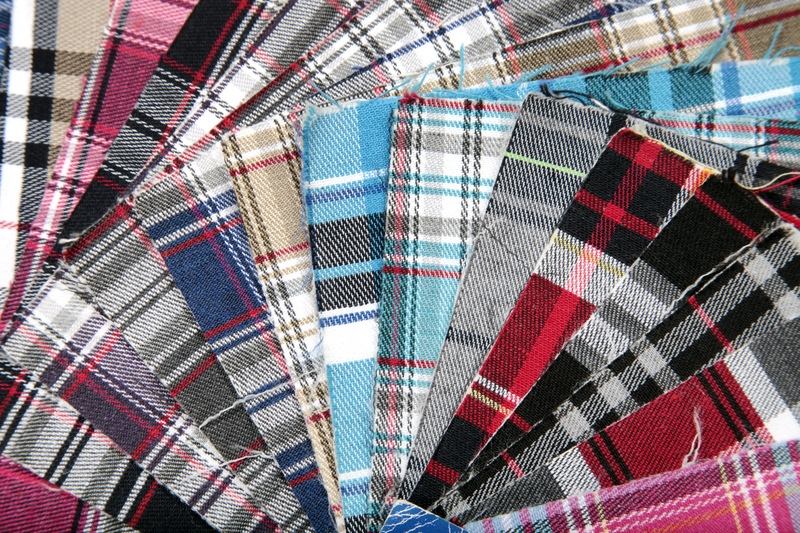Fun with Flannel
Sewing with flannel is a favorite among sewing enthusiasts for good reason—it's soft, cozy, and available in a wide variety of patterns. However, flannel does come with some challenges. At Marshall Dry Goods, we’ve learned many things over the years. One of them is how to create amazing projects using flannel. The more you understand the unique characteristics of flannel, the better your results will be. Here are some tips to help you succeed when quilting and sewing with this amazing fabric:
QUALITY MATTERS
Not all flannel is created equal, and the quality can vary significantly based on where and how much you pay for it. Higher-quality flannel is often double-sided, shrinks and frays less, and holds up better after washing. While it’s tempting to opt for cheaper flannel, especially for larger projects, it’s important to understand that with flannel you often get what you pay for. Investing in better-quality fabric will yield superior results. At Marshall Dry Goods, we only offer high-quality flannel so you can be confident in the material you're using. Cheaper flannel, especially from discount outlets or online stores, may have lower thread counts and can pill after washing. Additionally, the pattern (especially plaid) may be distorted due to its loose weave. If you need to rip seams while working with flannel, be careful to avoid creating holes in the fabric.
CHARACTERISTICS
Flannel is a popular choice for its texture and warmth. It's a soft, woven fabric made from wool, cotton, or synthetic fibers. The signature softness comes from a special process where a fine metal brush raises some of the cloth’s fibers, usually on one side, to give it that extra fluff. While the softness and warmth make flannel a favorite for quilts and blankets, it's essential to understand these characteristics to ensure success when using it in your sewing projects.
PREPARATION
Before you start working with flannel, there are a few important steps to keep in mind. Flannel typically comes in narrower rolls, so if you're quilting with smaller pieces, plan accordingly. Though flannel tends to be more affordable than other fabrics, you’ll often need to buy more than expected. Here’s why:
Flannel shrinks a lot: When you pre-wash it, expect it to come out of the dryer significantly smaller. Be sure to buy extra fabric to compensate.
Fraying: Flannel’s loosely woven fibers can fray easily, especially on the edges. To prevent this, increase your seam allowance from the standard ¼ inch to ½ inch. This may require buying up to a quarter yard more fabric, but it’s worth it for a more polished final product.
Pre-wash: When you get your flannel home, pre-wash it with a mild detergent and hot water to allow for shrinkage. Consider using a lingerie bag to minimize fraying during washing.
Drying: Dry the fabric on high heat and, if needed, toss in a large towel or dryer balls to reduce wrinkles. If your fabric does wrinkle, try pressing it rather than ironing, as ironing can stretch the fabric. Using starch can also help control flannel’s stretchiness, which can make it slippery to sew.
WORKING WITH FLANNEL
Once your flannel is prepped, it's time to start sewing. Since flannel is thicker and softer than most fabrics, it can be more demanding on your tools. Use sharp scissors or a large-blade rotary cutter (at least 2 inches in diameter) to cut your fabric. Equip your sewing machine with a fresh 80/12 or 90/14 needle, as these are better suited for flannel’s thickness.
For your stitching, opt for a slightly longer stitch length than you would with lightweight cotton. This will create a strong seam and make it easier to pick apart if needed. A walking foot is also a great addition to your machine when sewing with flannel, as it helps prevent the fabric from stretching out of shape.
CLEANUP TIPS
Flannel’s loose weave creates more lint than other fabrics, so it’s essential to clean your sewing machine after every project. Be sure to clean out the bobbin area and around the needle. A compressed air duster can help get into the smaller corners of your machine, ensuring it's lint-free and ready for your next project.
At Marshall Dry Goods, our warehouse is packed with flannel and other high-quality fabrics for you to choose from. Stop by our location at 310 W. Main Street in downtown Batesville, Arkansas, or give us a call to explore all the flannel options we have waiting for you!

